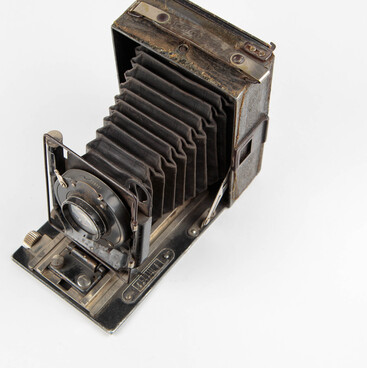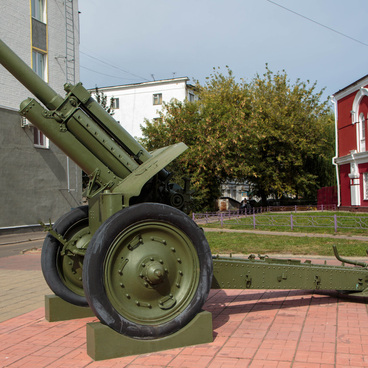The French arms manufacturer Schneider created a 122-millimeter howitzer M1910, building on the experience of the Russo-Japanese War. This artillery piece was one of the best field howitzers of its time. It was a short-barreled howitzer intended for low-angle fire — from +20° to +45°.
The Imperial Russian Army actively used howitzers of the 1910 model during the First World War. These guns were put into service with the Red Army during the Russian Civil War. In the late 1920s, the military leadership of the Soviet Union decided to modernize them: it was necessary to increase the maximum range of fire.
In 1930, Perm Plant No. 172 completed the required modifications. The design bureau fitted the M1910 howitzers with a standard sight and a stronger carriage and elevating mechanism. In addition, the factory made a number of changes to the design of recoil mechanisms.
The howitzer had an interrupted screw breechblock, a box trail (rather than the split trail configuration), and wooden wheels that limited the speed to six kilometers per hour. Sighting devices were installed on the carriage; there was also a gun shield to protect the crew from bullets and shell fragments.
The artillery piece was towed both by horses and motorized vehicles. The M1910 model was emplaced in less than a minute, and the same amount of time was required to bring it into traveling configuration.
The Soviet modernized 122-millimeter howitzer of the 1910 model was a divisional gun. It was intended for the destruction or suppression of manpower, enemy firepower, artillery pieces, and motorized vehicles in assembly points.
The 122-millimeter howitzer M1910/30 model was used
by the Red Army in the battles on the Khalkhin Gol River in 1939 and in the
Soviet-Finnish War of 1939–1940. Until 1942, this artillery piece was one of
the most widespread; later the outdated gun was replaced by the M-30 howitzer,
which was developed at plant No. 172.



